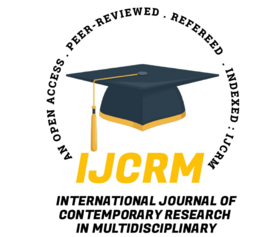International Journal of Contemporary Research In Multidisciplinary, 2025;4(3):319-331
Sustainability of India’s Current Account Deficit: An Empirical Study
Author Name: Jahinger Ahmad Thoker; Dr. G.S. Chauhan;
Abstract
The sustainability of the current account deficit (CAD) is a critical indicator of a country’s macroeconomic stability, particularly for emerging economies like India. This study empirically examines the long-term sustainability of India’s current account deficit (CAD) in the post-liberalization era, with a focus on the intertemporal budget constraint framework. Using annual time-series data from 1991 to 2023, the study employs econometric techniques such as Augmented Dickey-Fuller (ADF), Phillips-Perron (PP), and KPSS tests for stationarity, the Johansen Cointegration Test for long-run equilibrium relationships, and an Error Correction Model (ECM) to capture short-run dynamics. Granger causality tests and structural break analysis further enrich the investigation by identifying causality and external shocks, respectively. The results reveal a long-run cointegrating relationship between the CAD and key macroeconomic variables, including GDP growth, foreign exchange reserves, trade balance, and capital flows, indicating that India’s current account position has been broadly sustainable. However, short-run imbalances and sensitivity to external shocks, such as oil price volatility, global financial uncertainty, and the COVID-19 pandemic, highlight vulnerabilities that warrant policy attention. The study concludes with policy recommendations focused on export diversification, prudent external borrowing, and exchange rate management to ensure long-term sustainability.
Keywords
Current Account Deficit, Sustainability, India, Time-Series Analysis, Cointegration, Error Correction Model, External Sector





